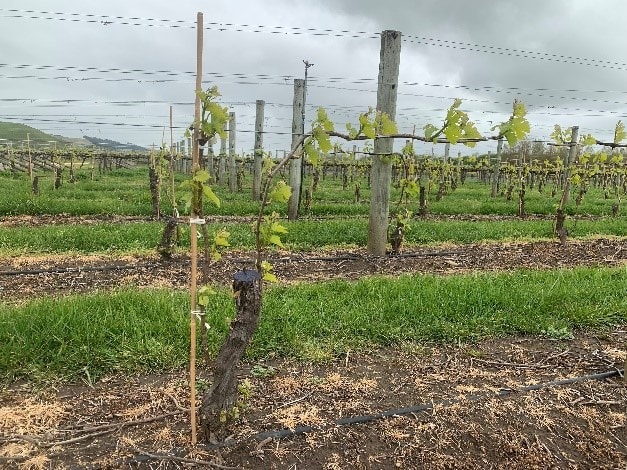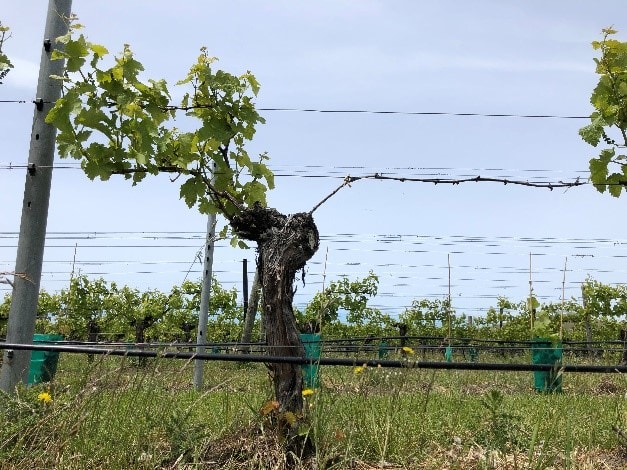New research into the management of grapevine trunk disease
Eline van Zijll de Jong1 and Mark Sosnowski2
1Linnaeus Ltd, 2South Australian Research & Development Institute
Grapevine trunk disease is a major threat to the economic sustainability of New Zealand vineyards. The disease not only causes significant yield and quality reductions but also shortens the lifespan of vineyards. Remedial surgery (Figure 1) is used to ‘renew’ infected vines by removing diseased wood and reworking vines to improve productivity. Grower reliance on remedial surgery is set to increase as vineyards in New Zealand are reaching the age that production is likely to be significantly affected by trunk disease.

Figure 1. A grapevine that has undergone remedial surgery.
Timely intervention is important for effective disease control and preventing vine death. The efficacy of remedial surgery is dependent on complete removal of infected wood. Successful implementation of remedial surgery is also determined by the growth and origin of watershoots. Cuts close to the graft union improves efficacy but reduces the likelihood of watershoot growth from the scion. There are indications that under New Zealand conditions recovery of watershoots is variable in winter and may be improved if remediation is carried out in spring.
A new research project in the Vineyard Ecosystems Programme funded by New Zealand Winegrowers and the Ministry of Business, Innovation and Employment has commenced to facilitate the development of best practice recommendations for New Zealand growers on the optimal time and position for remedial surgery based on the recovery of watershoots and the distribution of pathogens and disease symptoms.

Figure 2. Internal symptoms of grapevine trunk disease.
In 2019, three trials were established in mature commercial vineyard blocks requiring remedial surgery. One trial in an organic block of Sauvignon Blanc in Marlborough and one trial each in blocks of Cabernet Sauvignon and Merlot in Hawke’s Bay. Remedial surgery will be performed in winter and spring over 4 years to collect robust field data on watershoot production, the rate of disease progression in trunks (Figure 2) and external dieback symptoms (Figure 3). Data will also be collected on crop yields before and after treatment. Vines from all three varieties will be sampled to determine how far in advance of visible symptoms dieback pathogens are found and to identify the main causal agents. In addition to improving best practice guidelines, this research is expected to assist growers in making informed decisions on whether to retrunk or replant.

Figure 3. Symptoms of dieback in cordon (above) and cane (below) pruned grapevines.

This article first appeared in the April/May 2020 issue of the New Zealand Winegrower Magazine.

















